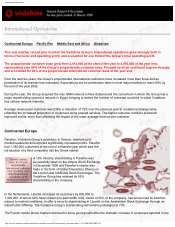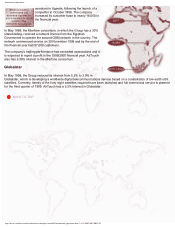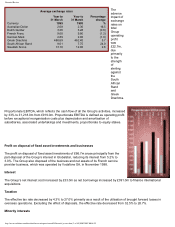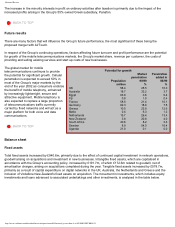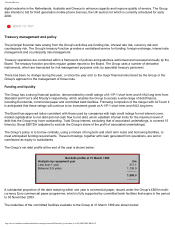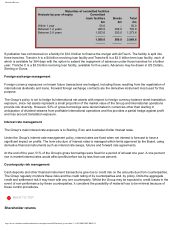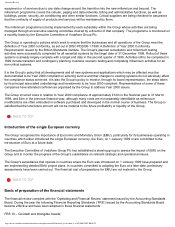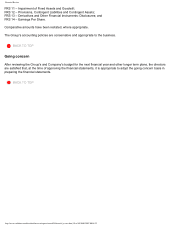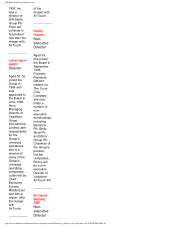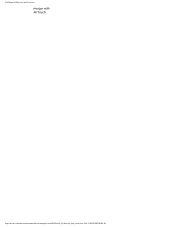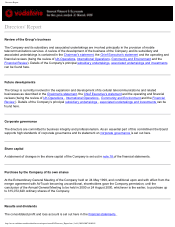Vodafone 1999 Annual Report Download - page 21
Download and view the complete annual report
Please find page 21 of the 1999 Vodafone annual report below. You can navigate through the pages in the report by either clicking on the pages listed below, or by using the keyword search tool below to find specific information within the annual report.
Financial Review
digital networks in the Netherlands, Australia and Greece to enhance capacity and improve quality of service. The Group
also intends to bid for third generation mobile phone licences, the UK auction for which is currently scheduled for early
2000.
BACK TO TOP
Treasury management and policy
The principal financial risks arising from the Group’s activities are funding risk, interest rate risk, currency risk and
counterparty risk. The Group’s treasury function provides a centralised service for funding, foreign exchange, interest rate
management and counterparty risk management.
Treasury operations are conducted within a framework of policies and guidelines authorised and reviewed annually by the
Board. The treasury function provides regular update reports to the Board. The Group uses a number of derivative
instruments, which are transacted for risk management purposes only, by specialist treasury personnel.
There has been no change during the year, or since the year end, to the major financial risks faced by the Group or the
Group’s approach to the management of those risks.
Funding and liquidity
The Group has a strong financial position, demonstrated by credit ratings of A-1/P-1 short term and A+/A2 long term from
Standard and Poor’s and Moody’s respectively, which enables the Group to access a wide range of debt finance,
including Eurobonds, commercial paper and committed bank facilities. Following completion of the merger with AirTouch it
is anticipated that these ratings will continue to be investment grade at A-1/P-1 short term and A/A2 long term.
The Board has approved ratios consistent with those used by companies with high credit ratings for net interest cover,
market capitalisation to net debt and net cash flow to net debt, which establish internal limits for the maximum level of
debt that the Group may have outstanding. Total Group interest, excluding that of associated undertakings, is covered 15
times by Group EBITDA (adjusted to exclude the Group’s share of the profit of associated undertakings).
The Group’s policy is to borrow centrally, using a mixture of long term and short term loans and borrowing facilities, to
meet anticipated funding requirements. These borrowings, together with cash generated from operations, are lent or
contributed as equity to subsidiaries.
The Group’s net debt profile at the end of the year is shown below:
Net debt profile at 31 March 1999
Analysis by repayment year £m
Less than 1 year 371.1
Between 2-5 years 1,136.9
––––––
1,508.0
––––––
A substantial proportion of the debt maturing within one year is commercial paper, issued under the Group’s £800m multi-
currency Euro commercial paper programme, which is fully supported by committed bank facilities that expire in the period
to 30 November 2003.
The maturities of the committed facilities available to the Group at 31 March 1999 are shown below:
http://www.vodafone.com/download/investor/reports/annual99/financial_review.htm (6 of 10)30/03/2007 00:08:22


